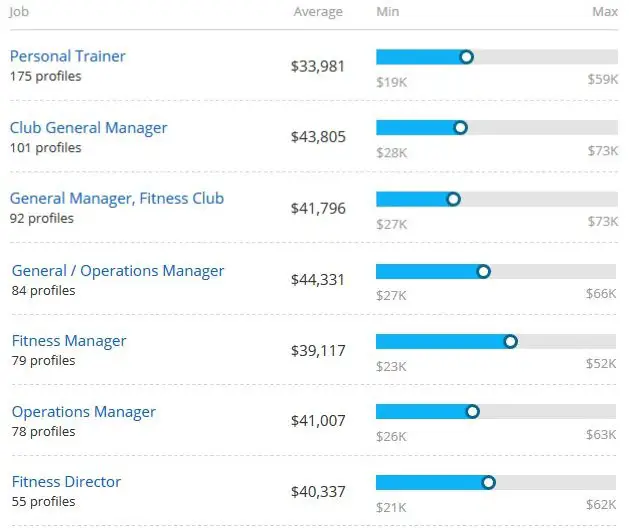How to become a Personal Trainer
This article provides in-depth information into What is Personal Trainer? What Personal Trainers do? Degrees for Personal Trainers, Steps to become Personal Trainer and much more.
The fitness industry is growing rapidly. Personal trainers, also known as fitness trainers, are in high demand, with a job growth outlook of 15% in the next ten years.
If you're passionate about health and fitness, a career as a personal trainer may be right for you.
To be a successful personal trainer, there are a few things you need to know. In the following guide, we'll tell you about the job, the skills you need, and your potential salary.
And we'll explain the types of qualifications you can get and where a career as a personal trainer can take you.
What is a personal trainer?
A personal trainer works with clients to improve their health and fitness. They use their advanced knowledge of human anatomy, nutrition, and physiology to create personalized fitness programs.
A nationally certified personal trainer may work in a health club. Part of their role may be to work as a group fitness instructor, hosting scheduled fitness classes. They may also advise clients how to safely use equipment such as weights, bikes, and treadmills.
Alternatively, they may have their own personal training business with one-on-one sessions. Some personal trainers also offer online coaching appointments.
Personal trainers help their clients reach their fitness goals.
A quick snapshot of a personal trainer career
Let’s take a look at the personal trainer career profile:
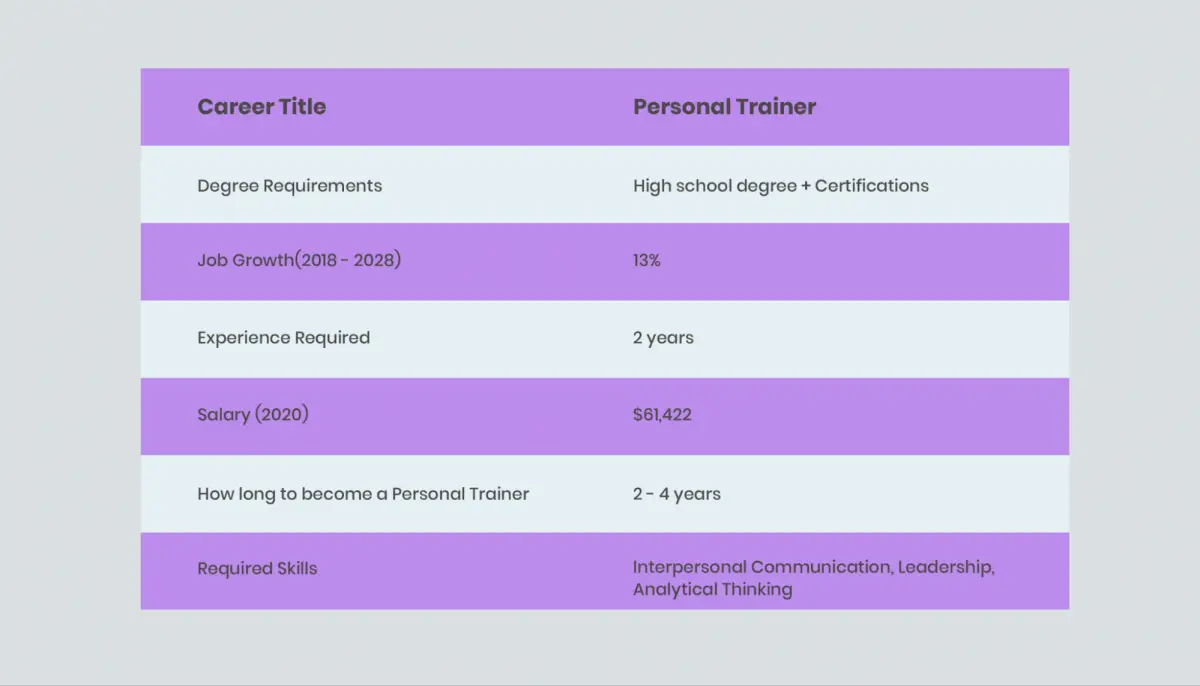
|
Career Title |
Personal Trainer |
|
Degree Requirements |
High school degree+ Certification |
|
Job Growth (2018- 2028) |
13% |
|
Experience required |
2 years |
|
Salary (2020) |
$61,422 |
|
How long to become a Personal Trainer |
2-4 years |
|
Required Skills |
Interpersonal, Communication, Leadership, Analytical thinking |
How to become a personal trainer
To work as a fitness professional, you'll need to take the following steps:
What does a Personal Trainer do ?
They work with their clients one-on-one to help them lose weight, get stronger, improve their health and maintenance, establish healthy nutritional behavior by motivating their clients towards success. They create goals for their clients and train them to achieve those goals with continuous assessment of the health needs of their clients. A certified personal trainer can be self-employed, work for a corporation, or even at a gym or a fitness center.
Steps for becoming a Personal Trainer
1
Start With A High School Degree
To be a certified personal trainer, you’ll need a high school degree or equivalent.
Personal trainers need to enroll in further training, such as post-secondary education, a certification course, or training course.
To work in the industry, you’ll need to complete a certification course or exam.
2
Complete First Aid Certification
To work in the industry, personal trainers need to be confident administering first aid. You’ll need to complete a Cardiopulmonary Resuscitation (CPR) and Automated External Defibrillator (AED) certification program.
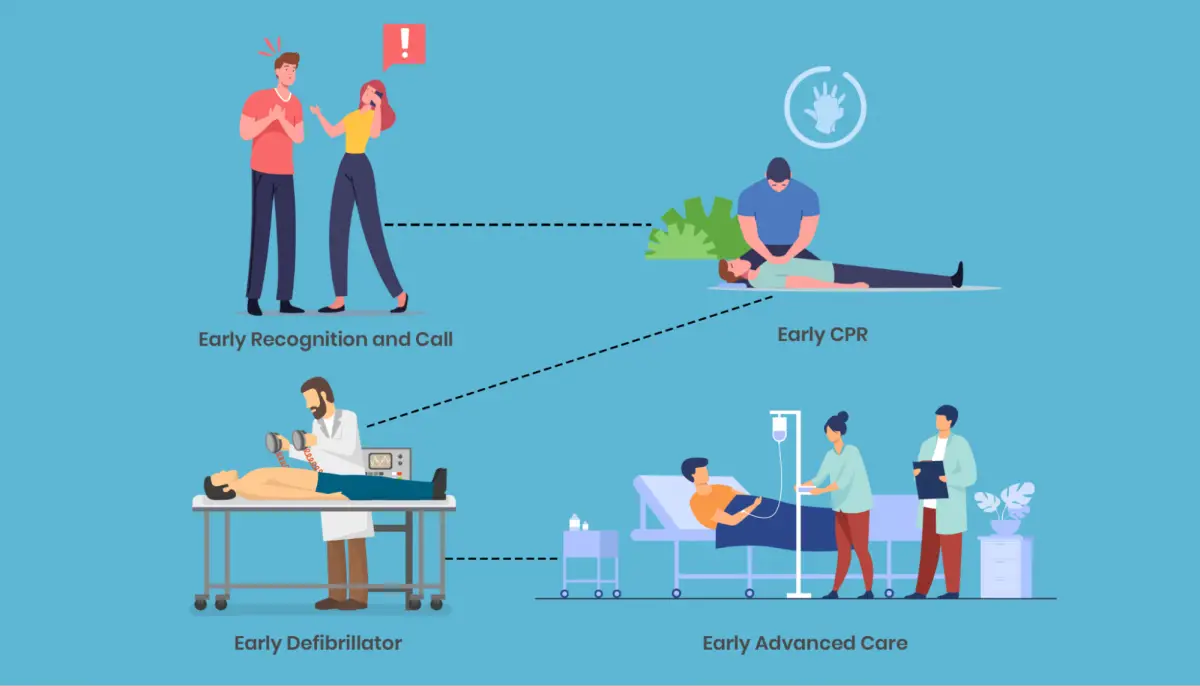
These programs teach the trainers to identify medical emergencies and act swiftly.
Every personal trainer requires this national certification before they can legally work in the profession. You can access this training via ACSM (American College of Sports Medicine) and other certifying organizations.
3
Choose A Fitness Specialty
Before you start your career, you need to decide what you want your specialty to be.
You can choose a training program that reflects your personal interests and professional goals.
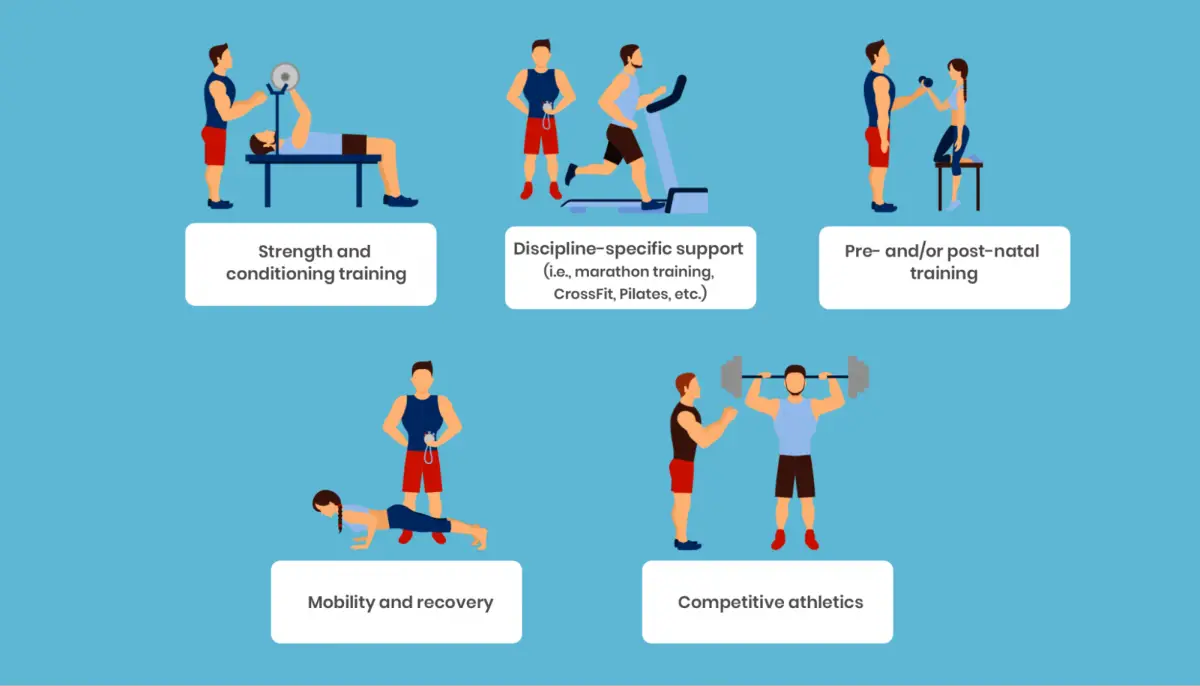
For example, you may like to be an aerobics instructor, so you’d choose group exercise as your specialty. Or you may like to focus on individual personal training.
Once you choose your specialization, you can read course reviews and select the program that best suits your goals.
4
Prepare For Certification
Once you select a fitness program, you can work towards your certification.
There are a few options to choose from. For example, popular certification bodies include the American Council on Exercise, The National Academy of Sports Medicine, and the ACSM.
Training programs may vary and at the end of each, you’ll need to take a certification exam.
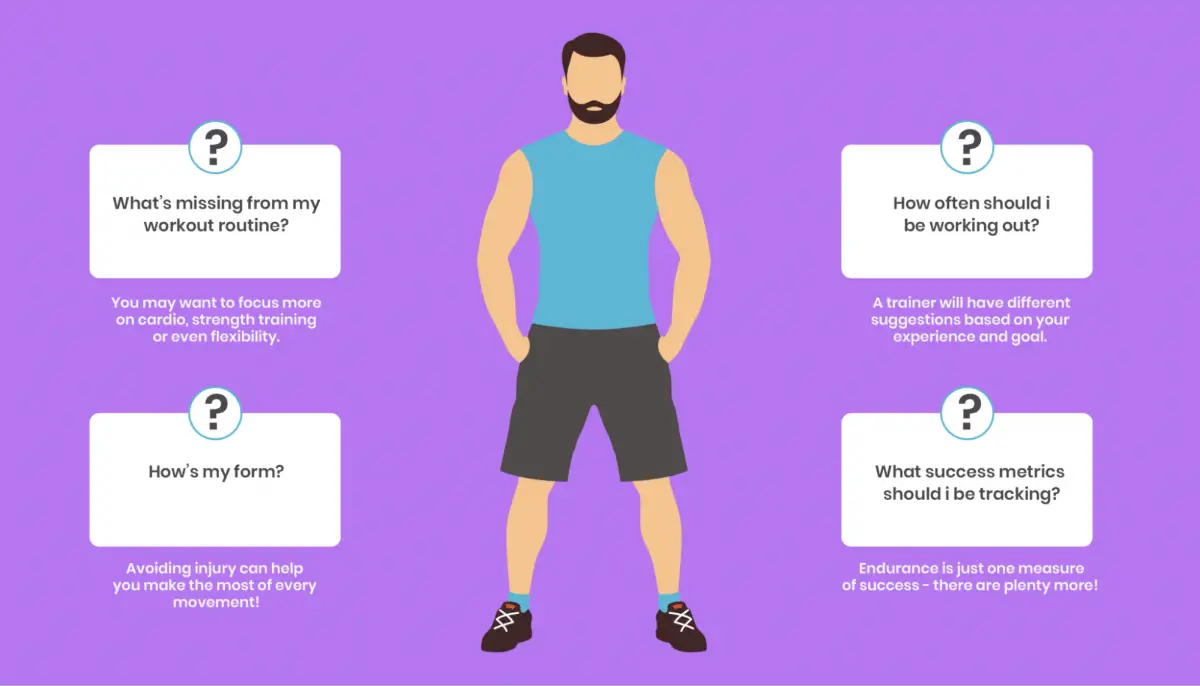
5
Pass The Certification Exam
When you’re ready, you can choose the certification you want and apply for the examination.
Most Personal Training Certification exams are online and include objective questions. You can expect between 120 and 150 questions.
For example, the certification test from the National Academy of Sports Medicine for a Personal Trainer Certification includes program planning, and client consultation.
There’s a general fitness assessment, and questions about exercise techniques, safety, and emergency procedures.
You may need to pay a fee to apply for the certification exam.
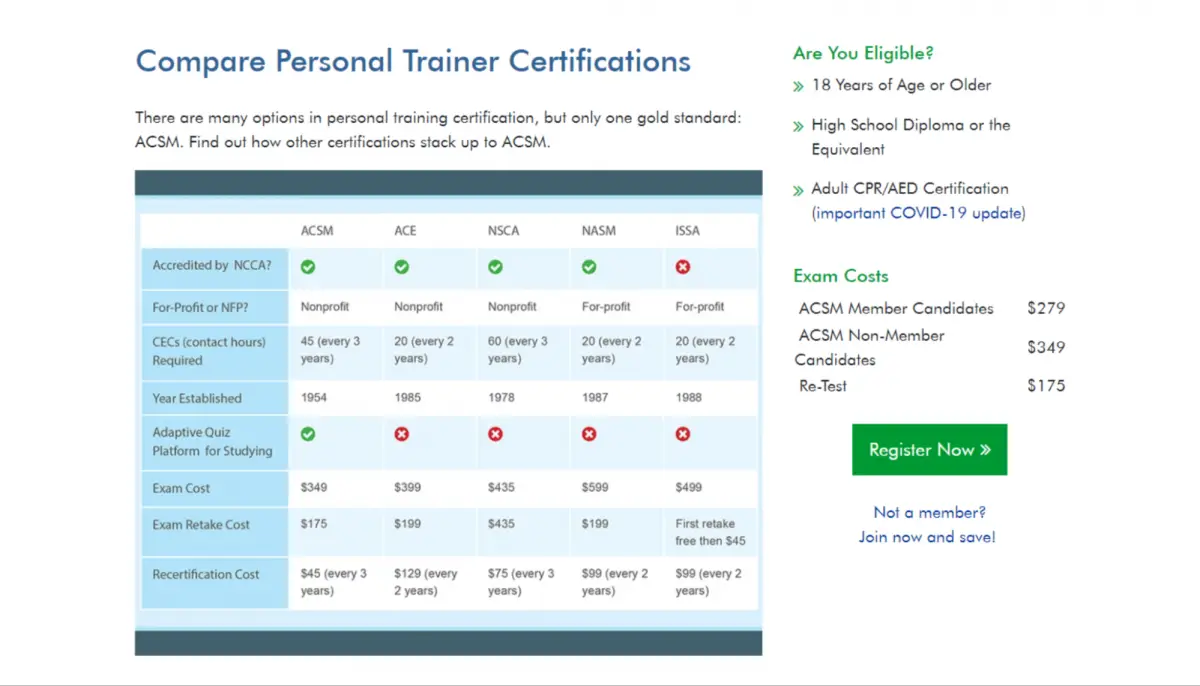
6
Find Work
After passing the certification exam, you'll be able to work as a nationally certified personal trainer.
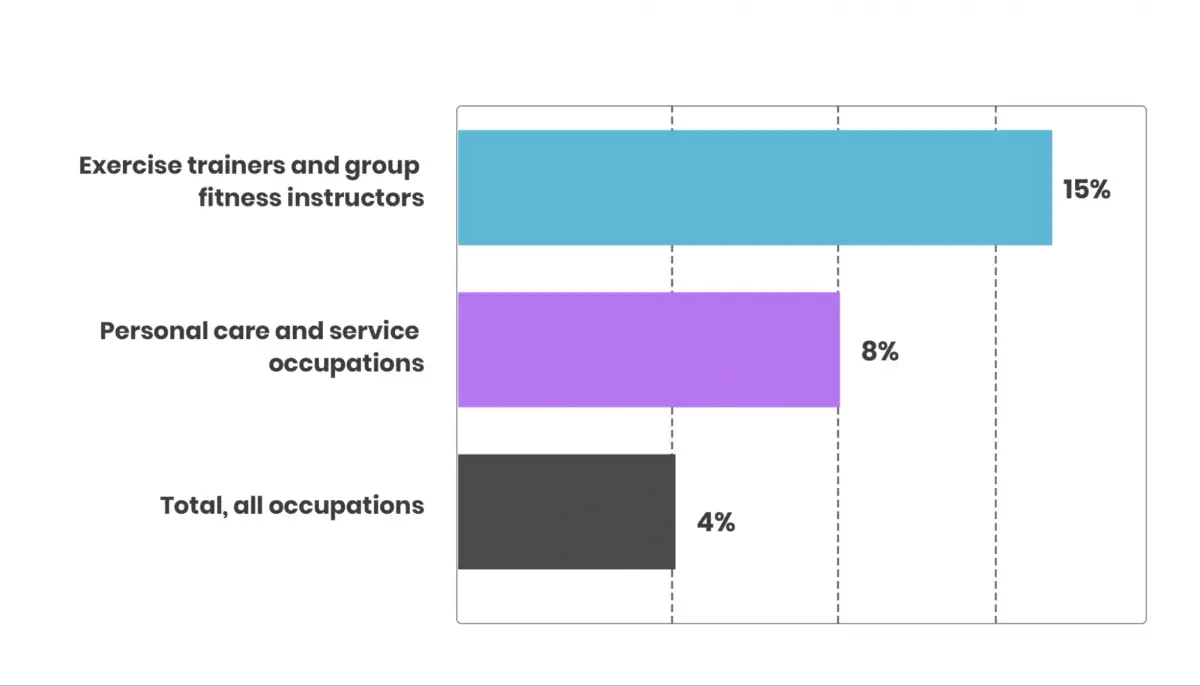
You’ll be eligible to apply for a job at a fitness center, health club, gym, or corporation.
Most fitness trainers start in a gym to gain experience under the supervision of an experienced trainer. This work experience helps them transition from being a student to a professional.
During this period, you’ll learn how to network and build your client base.
Alternatively, you can continue your education to increase your earning potential.
Personal trainer degree levels
Depending on your preferred career pathway, you can choose to study for a certificate, associate degree, bachelor’s degree, master’s degree, or doctorate:
Personal Trainer Degree Levels
Certificate
Personal trainer certificates are science-based programs. They prepare graduates for entry-level fitness trainer careers.
They usually consist of two or three semesters of study. Certificates teach students the fundamentals of the body. Topics include exercise physiology and human anatomy.
Through this curriculum, students learn about fitness assessments. And they learn about exercise program design, strength training, and nutrition.
During the program, students get hands-on experience working with clients with an off-campus internship.
Certification is essential for personal trainers who want to work in the industry. Let’s take a look at the coursework and objectives you can expect:
Physical Fitness Concepts
-
Preparing for PA & Health Benefits
-
Vigorous Aerobic & Sport Activity
-
Cardiovascular Fitness
Objectives
-
Scientific principles behind exercise
-
Learn about the biomechanics
-
Demonstrating the basic methods of exercise
-
Motivating the clients towards a healthy lifestyle
Introduction to Personal Training
-
Human Movement Science
-
Exercise Metabolism & Bioenergetics
-
Resistance Training Concepts
Objectives
-
Biomechanics
-
Scientific principles of exercise
-
Motor learning
Methodologies of Personal Training
-
Fitness in recreation and sport for all
-
Body Balance – Technique of stability
-
Step Choreography
Objectives
-
To prepare the fitness plan
-
Effectively communicate with the clients
-
Professionalism and ethics.
Associate
An associate degree is a two-year program. This type of degree gives students the chance to study a broader range of topics. Fields may include personal training, exercise science, sports medicine, athletic training, and kinesiology.
To complete an associate degree, students need to do between 60 and 66 credit hours of study.
Associate degrees are a mix of general education and career-specific instruction.
For example, students may focus on specific pathways such as sports nutrition, health and wellness, fitness marketing, fitness management, and fitness education.
Exercise Science and Nutrition
-
Fundamentals of nutrition and fitness
-
procedures and techniques in training
-
mechanical factors related to human movement
Objectives
-
Learn the fundamentals of fitness and health.
-
Plan the nutrition requirement according to the body requirements
-
Basic exercises to maintain health
Exercise Program Design
-
Introduction to the Fitness Profession
-
Concepts of Integrated Training
-
Acquisition and Consultation
Objectives
-
Weight management techniques
-
Fitness training techniques
-
Communicate to motivate the clients
-
Planning the exercise program
Strength and Conditioning
-
Physical Education and Training
-
Sports Medicine
-
Muscle Strength
Objectives
-
Correct exercise form and technique
-
Resistance training techniques
Bachelors
A bachelor's degree is a four-year commitment. Students follow a more comprehensive study plan, with topics such as nutrition, exercise science, exercise therapy, and sports medicine.
Students who enroll in this program get both formal education and practical experience. They may receive training and employment opportunities from a network of healthcare centers.
The coursework may include an introduction to anatomy, physiology, biomechanics, and psychology.
Graduates may choose to continue their education and study in related health fields such as physiotherapy, sport psychology, occupational therapy, or exercise physiology.
Motor Learning and Development
-
Basics of Good Teaching
-
Technical Skills
-
Cultivating Mental Toughness
Objectives
-
Theories of motor development
-
Communication and feedback
-
Motor control systems
Nutrition and Physical Activity
-
Chronic diseases and prevention strategies
-
Changing health behaviors
-
Factors Affecting Food Choices
Objectives
-
Nutritional strategies
-
Primary precaution techniques for a health problem
-
The health trends of the individual and community level
Principles in Resistance Training
-
Weight Training Technique
-
Muscular Structure and Function
-
Stretching and Flexibility
Objectives
-
Resistance training theory
-
Muscle physiology
-
Modes and methods of resistance training principles
Masters
A master’s degree is an additional two-year program. It’s for students who want to expand their knowledge and specialize in a certain field.
A master’s degree in health and fitness will usually have science components and electives. It also teaches leadership and administrative skills for senior positions
With a range of in-depth academic concentrations, students will learn advanced concepts.
Students may like to enroll in a master’s degree to pursue a career in fields such as orthopedic rehabilitation, physiology, or strength and conditioning.
Health Promotion Program Design
-
Planning a Health Promotion Program
-
Implementing a Health Promotion Program
-
Implementing a Health Promotion Program
Objectives
-
Learn to design health promotion programs
-
Organizational leadership skills
-
Managing grants
Health Behavior Program Evaluation
-
The Context of Program Planning
-
Logic Models
-
Implementation of and Budgeting for a Program Plan
Objectives
-
Conducting the qualitative and quantitative assessment of models
-
Examine the applicability of program evaluation with sample size.
-
Conduct a survey and examination to analyze the impact of the program
Statistics in Exercise Science
-
Neuromechanical Kinesiology
-
Basic Statistics for Exercise Science
-
Biomechanics
Objectives
-
Conduct the experimental design on your own data
-
Using the various distributions such as Poisson and binomial to test the exercise science and health.
-
Interpretation of the statics on the samples based on a sample size
Doctorate
At the end of a doctoral degree, graduates will have a phD. Students need to focus on a specific area, research the topic, and prepare a thesis.
Doctorate degrees can take years to complete. Most students take four to six years to compile their research.
Relevant concentrations include physiology, kinesiology, nutrition, health promotion, and exercise science.
Graduates with a phD can apply for academic positions.
Here’s a rundown of potential research plans and objectives.
Data Analysis in Kinesiology
-
Overview of research fits in kinesiology
-
Nature and purpose of research
-
Using Microsoft Excel and SPSS statistics
Objectives
-
Overview of the different possible data derived from health analysis
-
Evaluation of the health-related issues
-
Emphasize on the matching research issues
Approaches to Physical Activity
-
Measuring Physical Activity
-
Physical Activity Surveillance
-
Inactivity: sedentary behavior
Objectives
-
Strategies to improve the quality of life by reducing medicine intake.
-
Understand the importance of physical activity
-
Promote a healthy lifestyle
-
Recommend physical activities to clients
Exercise and Metabolic Response
-
Nutrition and Energy
-
Physiological Systems: Transportation
-
Muscle Physiology & Training: Energy Out
Objectives
-
Understand the complex systems of the body such as the neuro-hormonal systems
-
Muscle contractions due to exercise and metabolism
-
Adaptive exercise training
-
Understand the lipid and protein metabolism
How much does a personal trainer earn?
A personal trainer’s salary depends on education, experience, location, certification, and the job type. You can expect to earn between $44,329 to $74,453.
The median annual personal trainer salary in the US is $61,422.
A fitness professional who runs their own personal training business has the potential to earn a higher income.
Job Growth
According to the U.S Bureau of Labor Statistics (BLS), employment opportunities are expected to grow for personal trainers.
The job rate will increase by 15% by 2029 with the addition of 402,500 job openings. This predicted growth is faster than average.
The fitness industry is continuously evolving. With new job opportunities in the coming years, a career as a personal trainer has long-term potential.
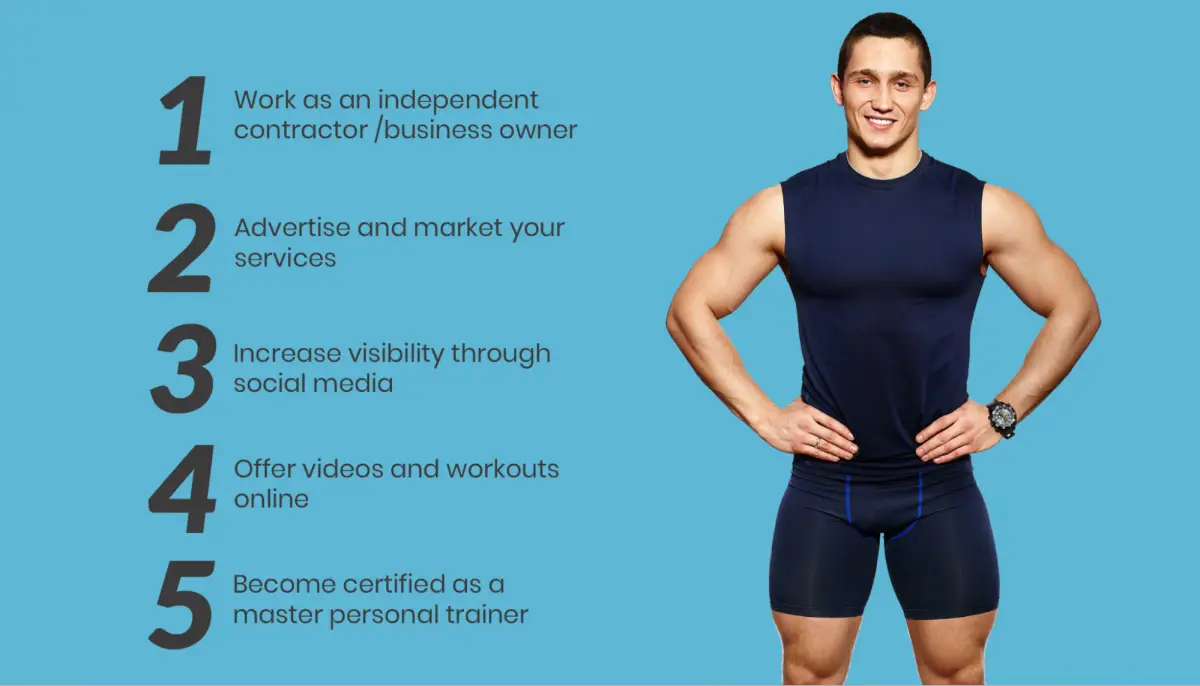
What skills does a personal trainer need?
If you want a personal trainer job, you'll need good communication skills. You should be approachable, motivational, and positive.
Personal trainers need to be physically fit and have a sound understanding of the human anatomy, nutrition, and exercise programs.
You'll embrace ongoing training and development, and have an up-to-date first aid certificate.
You'll need to understand emergency interventions and client limitations. And you should have a current CPR certification.
What career pathways are available for personal trainers
Personal trainers often enroll in further study. Here are three of the top health and fitness career pathways:
Nutrition and dietetics
If you’re passionate about healthy eating, you may like to study for a career as a nutritionist or dietitian. Qualified professionals can work in both public and private settings.
They assist patients with healthy eating plans, offer nutritional support during pregnancy, and reduce the impact of a diabetes diagnosis.
Physiotherapy
Physiotherapists focus on the muscles to improve and maintain health. They prescribe exercises and stretches, and treat injuries.
Physiotherapists may use massage to treat muscle aches. They often have specialties such as sports physiotherapy, or women’s health.
Occupational therapy
For those who are interested in improving the quality of life for their clients, occupational therapy could be the right career path.
They treat patients with injuries or disabilities, and improve the way they do everyday tasks. Patients are assessed and monitored, and may get mobility aids.
Becoming a personal trainer
In this article, we explained how to become a personal trainer.
Remember, you'll need to take a personal trainer course from a certifying body. And if you want to further your career, you can complete a related associate degree, bachelor's degree, master's degree, or doctorate.
Want more job options? Visit our careers guide.
